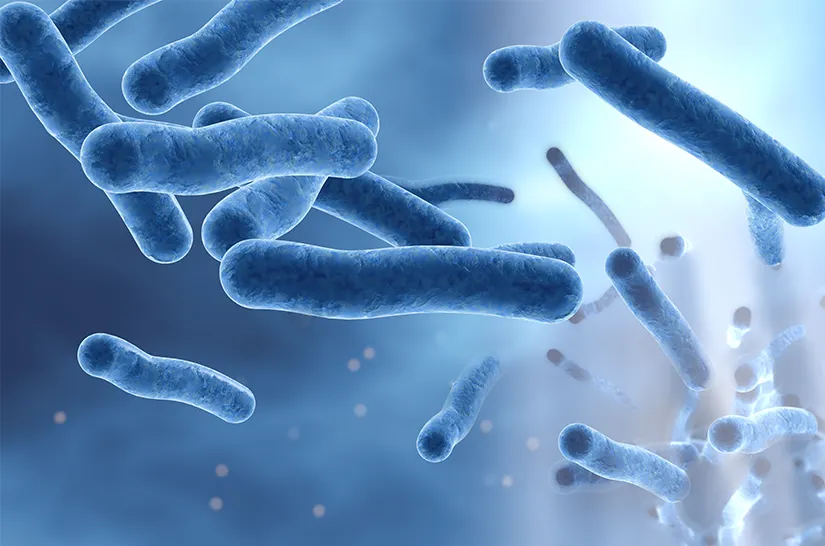The topic of water hygiene is enormously complex and includes not only the problem of bacteria and germs in drinking water. This in turn means that there is often still uncertainty – both on the part of tenants and from the perspective of owners. The enormous number of possible types of bacteria and germs that can occur in water causes confusion, as do the many ways of killing different pathogens or preventing them from multiplying.
A frequent problem in private households and public institutions
Bacteria and germs in drinking water are a recurring problem that both private households and public institutions have to deal with. The topic of water hygiene is therefore becoming increasingly important for people, especially with regard to bacteria and germs in drinking water. With the amendment of the Drinking Water Ordinance in 2011, an obligation for landlords came into force. It states that building owners must check their drinking water at clearly declared intervals if the building complex reaches a certain size or if third parties use the water as drinking water. This is to ensure that not only the drinking water supplied by the waterworks, but also the water that actually flows out of the taps is free of germs and bacteria. Nevertheless, tenants cannot be one hundred percent sure whether their tap water is really free of germs and bacteria.
Bacteria and germs in drinking water: Ignorance at all levels
Bacteria and germs in drinking water pose a major threat to users’ health. Therefore, in the following compilation of the most dangerous and common bacteria and germs in drinking water, we strive for a little transparency.
The most prominent bacteria: Legionella
Legionella is a familiar term to most people. These are so-called wet germs, which multiply particularly well in water. The rod-shaped bacteria are mainly found in warm water systems. Lukewarm temperatures of about 20 to 50 degrees Celsius are ideal for Legionella. Bacteria and germs in drinking water in the form of legionella are therefore not uncommon in private households either. Especially in the warmer summer months, an infestation within the household pipes is not uncommon. Acute Legionella infestation at water temperatures around 40 degrees Celsius is much more common than most people think.
Legionella can pose an enormous risk to health, especially when babies or young children are affected. This is because Legionella bacteria cause Pontiac fever, for example, as well as Legionnaires’ disease.
Would you like to test your tap water yourself? Click here for the Legionella test.
Cold water germs: Pseudomonads in drinking water
Pseudomonads are cold-water germs that thrive especially in stagnant water. Older piping systems or pipes with a lower flow rate are often the germination site of the pathogens, which can cause pneumonia and urinary tract infections. Immunocompromised people as well as children and babies are particularly affected.
Warum ist frisches Kaffeewasser entscheidend?
Für die Zubereitung einer Tasse voll bestem Kaffeegeschmack ist frisches Wasser ebenfalls eine wichtige Grundvoraussetzung. Wasser, das direkt aus der Leitung kommt, besitzt nämlich eine hervorragende Sauerstoffsättigung, die sich positiv auf den letztendlichen Kaffeegeschmack auswirkt. Abgestandenes Wasser hingegen entwickelt früher oder später einen abstoßenden Geschmack, der sich negativ im Kaffeearoma abzeichnet.
What does biofilm have to do with bacteria and germs in drinking water?
Biofilm describes the organic matter generally found in water that is deposited in pipes and lines. These deposits are often breeding grounds for bacteria and germs in drinking water, as they provide ideal conditions for pathogen growth. This permanent breeding ground for pathogens contaminates the water in the long term, because germs and bacteria are constantly forming here and thus enter the drinking water. Biofilms in lines and pipes should therefore be regularly removed by a professional. These biofilms are also a frequent problem in dental practices, for example, when deposits form in instrument hoses.
E.Coli bacteria in drinking water
Bacteria of the E. coli strain are found in both human and animal intestines. If severe contamination by E. coli bacteria occurs, this may indicate contamination of groundwater with fecal matter (for example, in more rural areas with well usage). The bacteria primarily cause discomfort in the stomach and intestines, but are also associated with inflammation of the appendix or peritoneum.
Persistent bacteria and germs in drinking water: Enterococci
Enterococci, like E. coli bacteria, are among the intestinal pathogens and, especially in high concentrations, are very dangerous to human health. Because bacteria and germs in drinking water are often underestimated, the danger they pose is enormous.
In particular, a water test for legionella is recommended if this is not carried out by the landlord or if the landlord does not fulfill his obligation to provide proof to the tenant. Even if compliance with the drinking water ordinance is strictly controlled, contamination within the in-house pipes is not uncommon and should not be underestimated. See all bacteria water test kits of IVARIO.
Do you have questions about other bacteria and germs in drinking water? Leave us a comment!


